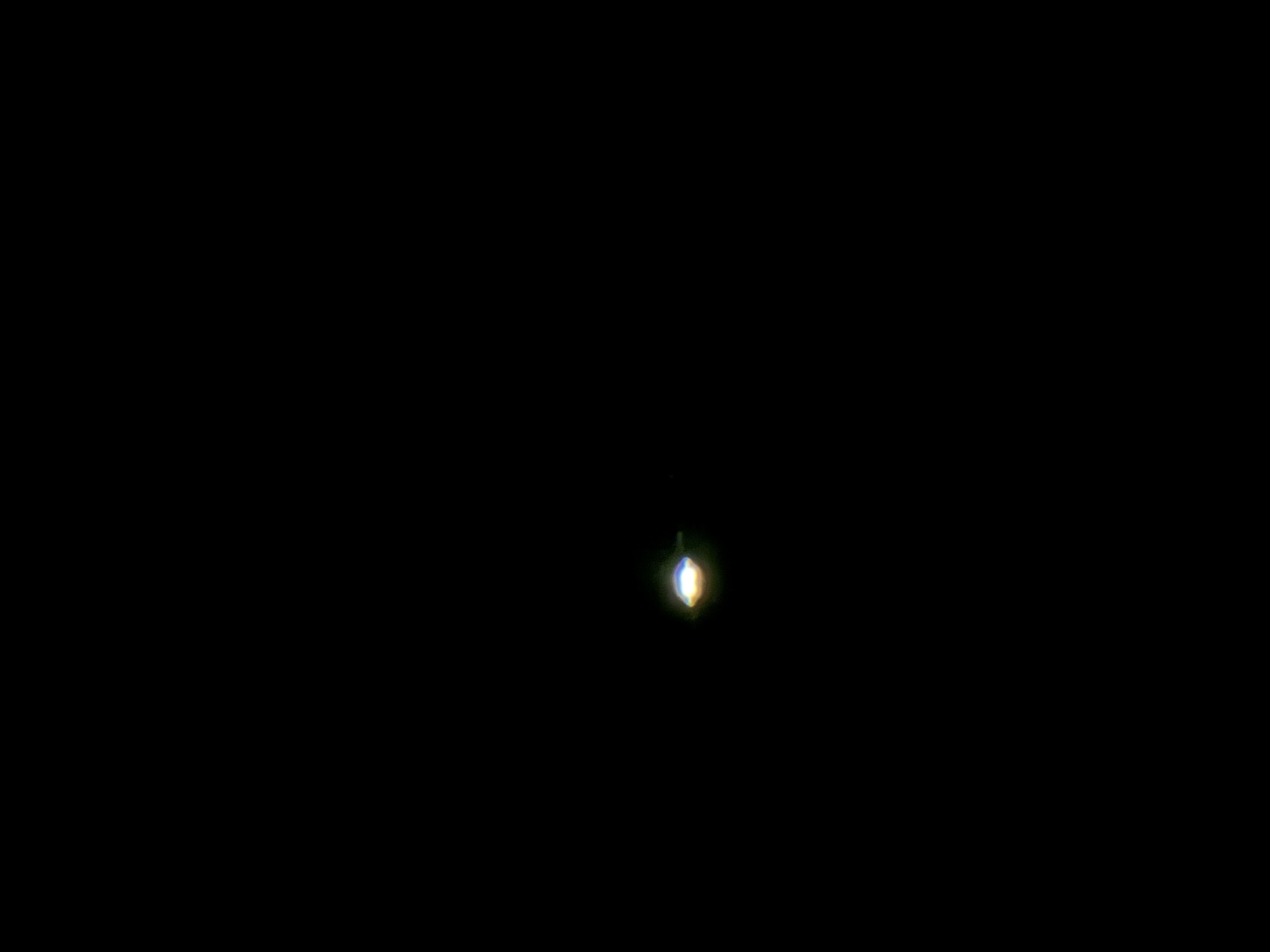We found ourselves back in upstate South Carolina and I brought the telescope and associated equipment up again. The skies were clear last night and temperature was around freezing.
I really wanted to find something other than Saturn as that was really the only success I had on my previous attempt. I again pulled out the app on my phone and tied to locate Jupiter. Once I found what I thought was Jupiter and positioned the telescope to try and see it. After progressively increasing the magnification until getting to my highest available magnification which is a Televue 3mm Delite for magnificaiton of 160x what I thought was Jupiter still looked like a very tiny featureless almost speck. I was confused because I thought it would look better than what I was seeing.
During this time lots of family members were kind of around hoping to see something through the telescope and it was pretty cold outside. So, I kind of pivoted and decided to try and see Venus. I got Venus locked in but it was very close to the horizon. You could make out that it was not a pinpoint star, and that it was not circular but rather appeared somewhat crescentic, which I took as proof that it was Venus. However, the views were kind of limited. There was a lot of what I think was atmospheric distortion being so close to the horizon and aside from seeing that it wasn’t pinpoint and that it was a little crescentic, it was otherwise pretty featureless.
I shifted to Saturn again know that it would probably give a view that the people I was with would be happy with. I got Saturn locked on and got some great views of Saturn. I was able to rotate several people looking through the eyepiece at Saturn to have a look and people were very happy with the views. The rings of Saturn were flat going across the middle of the planet. It was unmistakably Saturn. Aside from the rings, it was difficult to make out much surface detail on the planet. As a novice I am not sure if that is due to the limits of my telescope, the level of magnification, or my inexperience.
After the family members had some level of satiety and I felt better about myself that I was able to show people something that they were impressed with I decided to reattempt Jupiter. I decided that what I had been pointing at initially was not actually Jupiter and changed to a different target. The second attempt proved to be correct. It was unmistakably Jupiter. You could see some of the faint strips on the planet. The great read spot was not identified, I am not sure if it was facing the other way or I just couldn’t make it out. Two of Jupiter’s moons were clearly visible near the planet. There were 1 or two additional specks that were further from the planet but along the same plane which I think were additional moons though I am not sure if they were too far away? I will have to try and research this at some point. Some family members who were willing to brave the cold were very happy with the views. Jupiter was definitely the highlight of the night.
After this I went for Mars. For Mars I would say that I could tell it appeared as a disc rather than a pinpoint star and I could tell it had a reddish tint. That was really all I could make out in terms of Mars.
I again made another attempt at the Andromeda galaxy. I found it on the phone app, but couldn’t see anything to correlate with my naked eye. This makes it hard to know where to be pointing the telescope. I used my widest field of view eyepiece which is a Televue Ethos 21mm which is supposed to have a pretty wide field of view. The experience was similar to last time, I couldn’t find it at all. I am not sure if this is due to my inexperience or if with the equipment I am using you aren’t really going to see much at all.
I have this phone camera adapter where you lock your phone in place and then somehow get it on the end of an eyepiece. I tried this several times with different planets and had close to zero success. The adapter is made by Televue and said it is compatible with most Televue eyepices, but it doesn’t really fit well on any of mine. You kind of just have to try to hold it over the eyepiece and it is extraordinarily finicky to try to get your phone to see anything. I am guessing the phone was having major problems trying to find something to focus on. A few times it would find the planet but it would essentially look like a smeared dot and I got a few pictures of what look like smeared dots. I will try using this again, but I feel like I am not optimistic that it will turn out any better in the future.

A big positive of the night was I was able to spend more time out with the telescope which I think was beneficial in just trying different things. For example, I think I have not been balancing the telescope well on the mount and it would run into issues sometimes when I would be trying to adjust it and it would kind of skip or not go as it was supposed to. So I tried rebalancing it and it seemed to work much better.
So overall I would say the night was a big success. We saw Venus, Saturn, Jupiter with some of its moons, and Mars. I got more familiar with some of my equipment and trying to find things in the night sky.

Leave a Reply